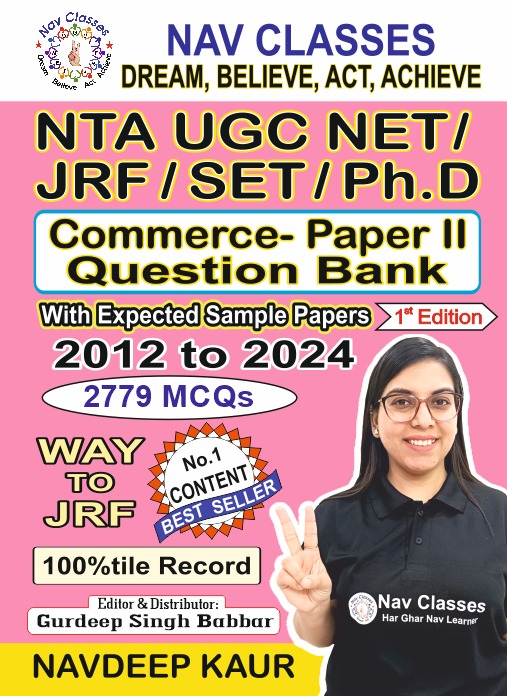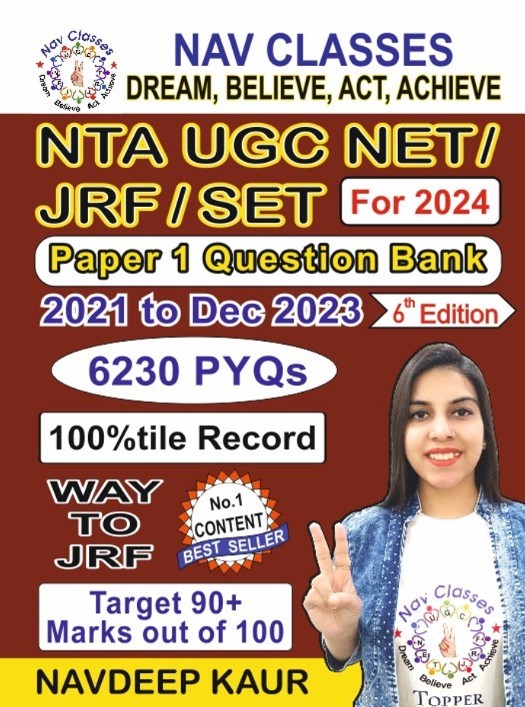1. Given below are two statements:
Statement I: Sunlight is a pre-requisite for the formation of photochemical smog in urban areas.
Statement II : Photochemical smog is a recurring phenomenon in winter and summer seasons in urban areas of India.
In the light of the above statements, choose the most appropriate answer from the options given below.
A. Both Statement I and Statement II are true
B. Both Statement I and Statement II are false
C. Statement I is correct but Statement II is false
D. Statement I is incorrect but Statement II is true
नीचे दो कथन दिए गए हैं:
कथन I: शहरी क्षेत्रों में प्रकाश-रासायनिक स्मॉग के निर्माण के लिए सूर्य का प्रकाश एक पूर्व-आवश्यकता है।
कथन II: फोटोकैमिकल स्मॉग भारत के शहरी क्षेत्रों में सर्दी और गर्मी के मौसम में एक आवर्ती घटना है।
उपरोक्त कथनों के आलोक में नीचे दिए गए विकल्पों में से सर्वाधिक उपयुक्त उत्तर का चयन कीजिए।
SHOW ANSWER
Explanation: Statement I is correct Photochemical smogs are created when sunlight interacts with nitrogen oxides and then reacts with hydrocarbons.
The second statement is false because When nitrogen oxides & volatile organic compounds (VOCs) combine with sunlight, photochemical smog is created, resulting in a brown cloud above cities. It happens more frequently in the summer because it’s when we get the most sunshine.
©navclasses
2. Which of the following goals are part of sustainable development goals?
A. Industry, innovation and infrastructure.
B. Universal higher education.
C. Reduced inequality.
D. Partnerships to achieve goals.
E. Clean air
(1) (A), (B). (C) and (D) only
(2) (A). (C) and (D) only
(3) (A), (B). (C) and (E) only
(4) (B), (C), (D) and (E) only
SHOW ANSWER
Explanation: It is equitable education not universal (universal means to be given to all). Option a, c, d are directly mentioned in SDGs.
SDGs are: 1. End poverty.
2. End hunger.
3. Ensure healthy lives.
4. Equitable quality education.
5. Gender equality.
6. Availability and sustainable management of water and sanitation.
7. Energy for all.
8. Employment and decent work for all.
9. Sustainable industrialization and foster innovation.
10. Reduce inequality.
11. Cities and human settlements are inclusive, safe, resilient and sustainable.
12. Sustainable consumption and production patterns.
13. Urgent action to combat climate change.
14. Sustainably use the oceans, seas and marine resources.
15. Terrestrial ecosystems, reverse land degradation.
16. Promote peaceful and inclusive societies.
17. Global partnership.
©navclasses
3. Which of the following conventions and protocols originated from the Rio Earth Summit?
A. UN framework convention on climate change.
B. Ramsar convention on wetlands.
C. UN convention to combat desertification.
D. Kyoto protocol.
E. Convention on biological diversity.
(1) (A), (B) and (E) only
(2) (A), (C), (D) and (E) only
(3) (A), (C) and (E) only
(4) (B), (C), (D) and (E) only
SHOW ANSWER
Explanation: The following documents were produced as a result of the Earth Summit:
> Agenda 21.
> Rio Declaration on Environment and Development.
> Forest Management Principles.
The following legally binding agreements (Rio Convention) have been made available for signature:
> The Convention on Biological Diversity (CBD) is an international treaty.
> Climate Change Framework Convention (UNFCCC).
> Desertification Convention of the United Nations.
©navclasses
4. Assertion (A): Global warming potential of a molecule of a greenhouse gas over different time spans of decades to 100 years may vary significantly.
Reason (R) : Some greenhouse gases have shorter lifetimes compared to carbon dioxide.
1 Both (A) and (R) are correct and (R) is the correct explanation of (A).
2 Both (A) and (R) are correct but (R) is NOT the correct explanation of (A).
3 (A) is correct but (R) is not correct.
4 (A) is not correct but (R) is correct.
अभिकथन (A) : ग्रीनहाउस गैस के एक अणु की ग्लोबल वार्मिंग क्षमता दशकों से लेकर 100 वर्षों तक के अलग-अलग समय में काफी भिन्न हो सकती है।
कारण (R) : कुछ ग्रीनहाउस गैसों का जीवनकाल कार्बन डाइऑक्साइड की तुलना में कम होता है।
SHOW ANSWER
Explanation: Due to a variety of factors, the global warming potential of a greenhouse gas molecule across time spans ranging from decades to 100 years might vary dramatically. When compared to carbon dioxide, some greenhouse gases have a shorter life span, for example methan 12 year and CO2: 20 to 200 years potential also vary.
©navclasses
5. Arrange the following countries in increasing order of their installed capacities of wind energy (as of 2018).
(A) China
(B) India
(C) USA
(D) France
(E) Germany
1. D< B< E < C < A
2. D < E < C < B< A
3. D < E < B < C < A
4. E < D < B < C < A
SHOW ANSWER
Explanation: Installed capacities of wind energy (as of March 2021):
> China – 288.32 GW
> United States – 122.32 GW
> Germany – 62.85 GW
> India – 38.63 GW
> Spain – 27.24 GW.
©navclasses
6. Which of the following countries has not signed/ratified the international solar alliance framework agreement?
1. Australia
2. Japan
3. United Kingdom
4. China
SHOW ANSWER
Explanation: The ISA framework has been ratified by the countries marked with a +. Updated for 2021:
Afghanistan, Bahrain, Belarus, Belgium, Belize, Bhutan, Botswana, Brunei Darussalam, Bulgaria, Cameroon, Congo, Denmark, El Salvador, Grenada, Guatemala, Haiti, Ireland, Jamaica, Liberia, Luxembourg, Maldives, Myanmar, Oman, Paraguay, Philippines, Romania, Saint Lucia, Saint Vincent and the Grenadines, Samoa, Thailand.
©navclasses
7. Statement I: Chronic toxic effects result from single dose of very high toxic substance or continuous exposure of sub lethal dose.
Statement II: Acute toxic effects are long lasting and irreversible mainly caused due to prolonged exposure to toxins and survival rate is very low.
In the light of the above statements, choose the correct answer from the options given below:
1. Both Statement I and Statement II are true.
2. Both Statement I and Statement II are false.
3. Statement I is correct but Statement II is false.
4. Statement I is incorrect but Statement II is true.
कथन I: बहुत अधिक जहरीले पदार्थ की एकल खुराक या उप-घातक खुराक के निरंतर संपर्क से होने वाले पुराने विषाक्त प्रभाव।
कथन II: तीव्र विषाक्त प्रभाव लंबे समय तक चलने वाले और अपरिवर्तनीय मुख्य रूप से विषाक्त पदार्थों के लंबे समय तक संपर्क के कारण होते हैं और जीवित रहने की दर बहुत कम होती है।
उपरोक्त कथनों के आलोक में नीचे दिए गए विकल्पों में से सही उत्तर का चयन करें:
SHOW ANSWER
Explanation: Chronic toxicity, or the development of deleterious consequences after long-term exposure to a contaminant or other stressor, is a crucial part of aquatic toxicology.
Acute toxicity refers to the negative effects of a chemical that occur as a result of a single or many exposures during a short period of time. To be classified as acute toxicity, the adverse effects must occur within 14 days after the substance’s intake.
©navclasses
8. For wind power electricity generation which among the following type of rotors is most commonly used?
1. Multi blade rotor
2. Savonius rotor
3. Propeller rotor
4. Darrieus rotor
SHOW ANSWER
Explanation: Types of wind mills:
> The savonius rotor: The savonius rotor is a very simple vertical axis device that is fully powered by wind thrust. The most basic piece of equipment is a vertically sliced drum. The two pieces are connected by a vertical shaft on opposite sides.
> Darrieus wind turbine: The Darrieus rotor is unique in that its operation is not readily apparent from its look. A vertical shaft is coupled to two or more flexible blades.
> Multi blade water pumping windmill: The blades are flat steel plates that work with the wind’s thrust to pump water. To ensure structural robustness, these are hinged to a metal ring, and the modest rotational speed adds to the dependability. The tail vane is commonly used to accomplish orientation.
> High-speed propeller-type wind turbines: Today’s horizontal axis wind turbines do not rely on thrust power to generate power. They are primarily determined by the aerodynamic forces that emerge when wind flows around an aerofoil blade. Windmills that rely on thrust are fundamentally inefficient. As a result, the aerofoil section is used to design all current wind turbine blades.
©navclasses
9. Assertion (A): Energy production from biomass has traditionally been considered carbon neutral.
Reason (R): Carbon dioxide emissions from combustion of biomass are sequestered by growing biomass.
1 Both (A) and (R) are true and (R) is the correct explanation of (A).
2 Both (A) and (R) are true but (R) is not the correct explanation of (A).
3 (A) is true but (R) is false.
4 (A) is false but (R) is true.
अभिकथन (A) : बायोमास से ऊर्जा उत्पादन को पारंपरिक रूप से कार्बन न्यूट्रल माना जाता है।
कारण (R) : बायोमास के दहन से कार्बन डाइऑक्साइड उत्सर्जन बढ़ते बायोमास द्वारा अलग किया जाता है।
SHOW ANSWER
Explanation: Because bioenergy is carbon — and climate — neutral as long as CO2 emissions from biofuel combustion are absorbed by growing biomass, carbon dioxide emissions from bioenergy production have historically been excluded from most emission inventories and impact on the environment evaluations. As a result, its climate impact has not been considered. A new technique for accounting for CO2 emissions from biomass burning in bioenergy systems has been proposed in a recent research.
©navclasses
10. Which of the following goals are related to millennium development goals?
A. Improving maternal health.
B. Controlling depletion of the ozone layer.
C. Improving the life of slum dwellers.
D. Creating smart city infrastructure.
E. Promoting gender equality and empowerment of women.
(1) (A), (C) and (E) only.
(2) (A), (C), (D) and (E) only.
(3) (A), (B), (C) and (E) only.
(4) (A), (B), (D) and (E) only.
SHOW ANSWER
Explanation: Controlling depletion of ozone layer is related to montreal protocol, creating smart city infrastructure does not come under MDGs.
MDG targets in depth:
Goal 1: Reduce the proportion of the population living below the national poverty line by half between 1990 and 2015.
Goal 1: The proportion of people who are hungry by half between 1990 and 2015.
Goal 2: Ensure that all children, both boys and girls, are able to complete a full course in primary education by 2015.
Goal 3: By 2005, eliminate gender disparities in primary and secondary education, and by 2015, eliminate gender disparities at all levels of education.
Goal 4: Reduce the under-5 age mortality rate by 2/3rd between 1990 and 2015.
Goal 5: Reduce by three quarters (75%), between 1990 and 2015, the maternal mortality ratio Goal 6: By 2015 Have halted & initiated the disease will have started to reverse.
Goal 6: By 2015 Have halted & initiated to reverse the prevalence of malaria and other major diseases
Goal 7: Reverse the loss of natural capital by incorporating sustainable development concepts into country policies and programmes.
Goal 7: By 2015 Halve, the proportion of people who do not have sustainable access to safe drinking water and basic sanitation.
Goal 7: By 2020, to have achieved a significant improvement in the lives of at least 100 million slum dwellers.
Goal 8: Make the benefits of new technology, especially information and communication (ICT), available in collaboration with the private sector.
©navclasses






